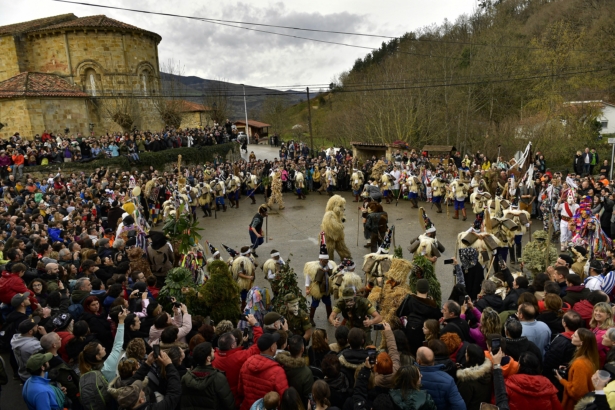SILIÓ, Spain—The clanging of cowbells at daybreak in a remote Spanish village represented the restoration of the cosmic order as an ancient winter festival returned from a pandemic-induced hiatus.
The men of Silió, a village of some 500 inhabitants in northern Spain’s Cantabria region, again dressed in homemade costumes and recreated the ritual slaughtering of a bear for the La Vijanera festival, whose origins date back to the Middle Ages.
Before the coronavirus caused the event’s cancellation for two years, the festival was banned during the 20th century dictatorship of Spanish leader Francisco Franco.
A group of local residents restored the tradition in the early 1980s after Spain’s return to democracy.

The festival now is held on the first Sunday of the year, unless New Year’s Day falls on a Sunday, as it did this year, in which case it is postponed until Jan. 8. Festivities kick off with the launching of a rocket at 6:00 a.m.
Over half of the 150 or so participants in the ritual are “zamarracos,” men wearing conical hats and a sheepskin and carrying four heavy cowbells draped over their bodies. Their clanging is supposed to scare away evil spirits, which are symbolized in the figure of the bear. One person dresses as the bear, and the festival concludes when the zamarracos surround the beast and “stab” it with spears.
Others dress up as other characters, including a knight, an elderly couple, and slightly ghoulish beings covered in natural materials like hay, fern leaves, or corn cobs.
There are also “moss men” like César Rodriguez, 41, who has taken part in the event since he was 9 years old. He is a member of the Friends of Vijanera Association, which organizes the Silió festival and is committed to keeping it alive.
“It is an inheritance from our grandparents, the essence of belonging to a community,” Rodríguez said. “It’s like going back to our roots, to honor our ancestors even more in a century like we are living in.”

